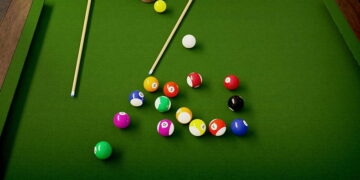In this exploration, we will journey through time, tracing the roots of tennis scoring back to medieval France. Here, “jeu de paume”, the precursor to tennis, first introduced the enigmatic term “love”.
As the game evolved across continents, so did its scoring conventions. This culminated in the 19th-century invention of “deuce” and “advantage”, adding layers of drama to each match. Join us on this thrilling excursion into the history of tennis scoring.
Jeu de Paume – The Beginning of Tennis
“Jeu de paume” is an indoor racquet sport considered to be one of the precursors to modern tennis. The term “jeu de paume” translates to “game of the palm” in French.
It originally involved hitting a ball with the hand, and later with a glove or a wooden racket, over a net. This sport eventually evolved into what we now know as tennis.
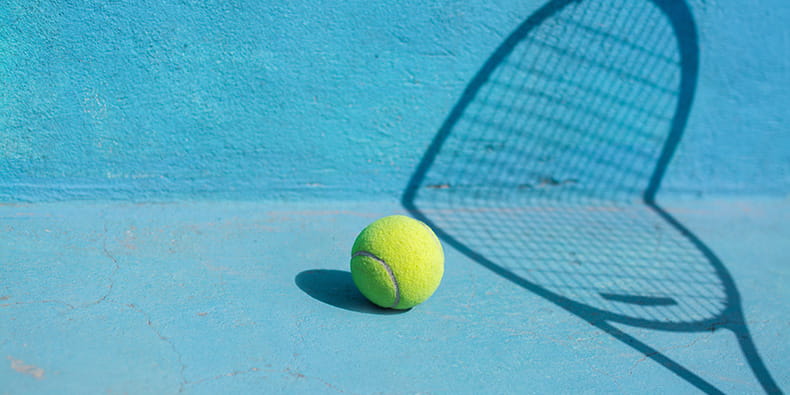
“Jeu de paume” is scored in a manner that is somehow different from modern tennis. In “jeu de paume”, the scoring system is based on a 15-point system similar to tennis, but there are some distinctions.
From 15 to 40 points, the scoring system is the same as tennis. However, after the 40 points comes the 45 or 60. Then, the server only needs one more point to win the game.
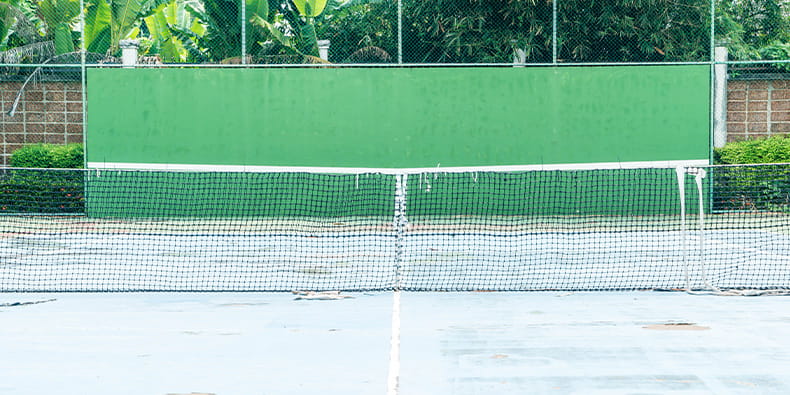
This point is called “45”, while in other variations of the game, it’s “60”. Winning one more point after reaching 45 or 60 secures the game for the server.
Other than that, if you’re interested in betting, note that the best tennis betting sites in the UK are the best platforms to wager on most tennis events. As you can see so far, “jeu de paume” shares similarities with modern tennis.
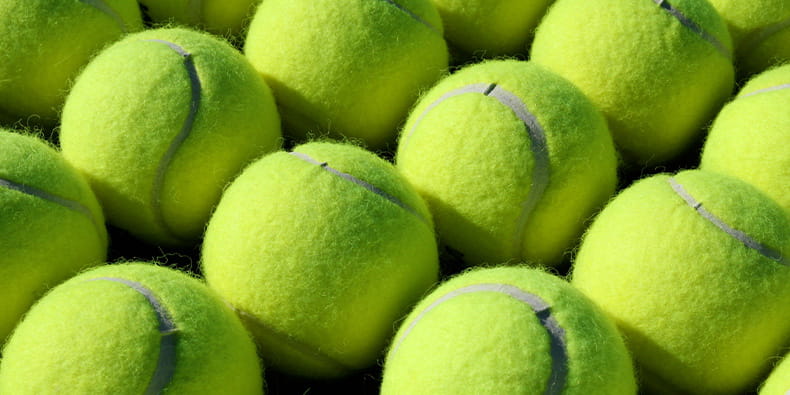
All in all, the history of the scoring system in tennis is directly related to its precursor. The scoring system of “jeu de paume” has some unique features that have evolved over time into the scoring system used in contemporary tennis.
The History of Tennis Scoring Terms: Love, Deuce, and Advantage
As we continue to explore the fascinating history of tennis scoring, it becomes evident that this sport has brought unique terminology. Terms like “love”, “deuce”, and “advantage” are integral to the sport and carry a historical weight that transcends mere numbers on a scoreboard.
The term “love” in tennis scoring is as peculiar as it is fascinating. It is the equivalent of zero points, and while its origin is not definitively documented, there are several compelling theories.

One theory suggests that “love” may have evolved from the French word “l’oeuf”, which means egg. The egg’s round shape resembles a zero, and the pronunciation might have transformed over time.
Another theory ties “love” to the Dutch word “lof”, meaning “honour”. In early tennis, players often referred to a scoreless game as playing for honour rather than points, and this could have morphed into “love”.

Regardless of its precise origin, “love” has become a distinctive part of the history behind tennis scoring. This evoked the notion of starting a match with a clean slate, without points, and a sense of sportsmanship and camaraderie.
Then, in tennis history of scoring, “deuce” signifies a tied score of 40-40 (or 60-60 in some older variations). The term itself has French roots, originating from “à deux le jeu”, which translates to “to both is the game”.

When the score reaches deuce, it implies that both players are equally positioned to win the game, and they must subsequently win two consecutive points to claim victory. Scoring in tennis history has shown that deuce introduces an element of tension.
It emphasises the need for a clear winner and prolonging the excitement of a game. The back-and-forth struggle at deuce is a testament to the competitive spirit of tennis and the challenge of achieving that crucial advantage.

In tennis scoring history, “advantage” emerges after a deuce when one player wins the next point. It signifies a potential game-winning opportunity, but it requires winning one more point to secure the game.
The term “advantage” summarises the fact that a player has a favourable position, but victory is not yet guaranteed. Thus, fortunes can shift rapidly, and the balance between triumph and defeat is delicate.

“Advantage” has been at the centre of some of the greatest tennis comebacks in history. Players, seemingly on the brink of defeat, rallied back with sheer determination and skill to turn the tables and secure victories.
The unique scoring terms in tennis “love, deuce, and advantage” are deeply rooted in the history of scoring system in tennis. They have been a part of the sport for centuries, adding depth and character to the game.

All in all, these terms remind us that tennis is not just a game of physical skill but also a mental and emotional contest where every point counts. They tell a story of competition, honour, and the pursuit of victory.
History of Scoring System in Tennis – The Origin
The roots of tennis scoring extend deep into history, finding their origin in the heart of medieval France. To understand the earliest forms of tennis scoring and its place in the history of scoring system in tennis, we must embark on a journey through time.
As we said before, the story begins with “jeu de paume”, which emerged in medieval France during the 12th century. Courts were typically set up in the courtyards of French monasteries and palaces, where it gained immense popularity among the nobility.

The scoring system in “jeu de paume” was rudimentary compared to today’s standards. Players competed to score points by hitting the ball over a net into designated areas on the opponent’s side.
However, the scoring method was notably different. “Jeu de paume” employed a system known as “chasing”. In this early form of tennis, the concept of love, meaning zero, had not yet found its way into the scoring lexicon.
Points were counted using the term “15”, suggesting that it took 15 points to win a game. This system was undoubtedly simpler than the one we use today. Interestingly, the word “chase” refers to the act of attempting to reach a certain score.
For instance, when a player needed to score two points to win, they would declare “15-1 chase”. If their opponent then scored a point, it would become “15-2 chase”, and so on.
The scoring progression was less structured than contemporary tennis, with matches often played to a predetermined number of chases rather than games or sets. It was an era when tennis scoring was more fluid, and the emphasis was on reaching the required number of chases.
Over the centuries, “jeu de paume” evolved, and so did its scoring system. This would influence the tennis scoring history later on. By the 16th century, racquets had replaced bare hands, and tennis courts took on a more familiar layout.

The Differences between the Two Scoring Systems
We have taken the time to summarise the relevant information covered so far about the differences between “jeu de paume” and tennis scoring. Have a look at the list below:
“Jeu de Paume” Scoring
- Chasing system based on reaching a specific number of points.
- Points were typically counted as “15,” “30”, etc.
- Did not have a structured deuce and advantage system.
- Players aimed to reach a predetermined number of chases to win a game.
- Early forms of the game involved striking the ball with hands, gloves, or wooden paddles.
- Court layout and dimensions were different from modern tennis.
Modern Tennis Scoring
- 15-30-40-game scoring system.
- Introduction of “love” (meaning zero) as a scoring term.
- Deuce and advantage system in place when the score reaches 40-40.
- Players must win two consecutive points at deuce to win a game.
- Aiming to reach a score of 40 and then winning the next point to secure a game.
- Specialised tennis racquets used in modern tennis.
- Modern tennis courts have standardised dimensions and layout.
It’s obvious to state that this scoring system is used for all in-play and standard tennis bets not only at the top-rated betting sites in the UK, but across the world as well. Furthermore, these platforms are not just the best place to wager on tennis but also on many other popular sports worldwide.
Modern Tennis Scoring
After a thorough overview of the history of tennis scoring, it’s now time to focus on modern tennis scoring. In the table below, you will find the most relevant information with regards to modern tennis scoring and other interesting details:
| Features | Modern Tennis Scoring |
|---|---|
| 🥎 Scoring System | 15-30-40 scoring system. |
| 📖 Terminology | “Love” (meaning zero), “deuce” (meaning 40-40), and “advantage” (if one player scores after 40-40). |
| 🏆 Winning a Game | Aiming to reach a score of 40 and then winning the next point to secure a game. |
| 🎾 Equipment | Specialised tennis racquets, shoes, and clothes. |
| ✨ Court Dimensions/Layout | Standardised court dimensions and layout in modern tennis. A tennis court measures 78 feet (23.77 meters) in length. Singles courts have a width of 27 feet (8.23 meters), while doubles courts are 36 feet (10.97 meters) wide. The service line on the court is situated 21 feet (6.4 meters) away from the net. |
As we conclude this exploration of modern tennis scoring, we have unveiled the intricacies that define the game’s scoring system. Plus, we have not only learnt about the origin of the unique 15-30-40 structure but also about the introduction of “love”, and the deuce-advantage concept.
This scoring system has endured and evolved over the years, showcasing the sport’s adaptability and appeal. Whether you are an avid player or a dedicated spectator, understanding these aspects adds depth to the appreciation of tennis.
Conclusion
In concluding our journey through the captivating history of tennis scoring, we have uncovered a rich tapestry of traditions, innovations, and tales. As you can see, we started this history trip from the humble beginnings of “jeu de paume” in medieval France to the structured 15-30-40-game format.
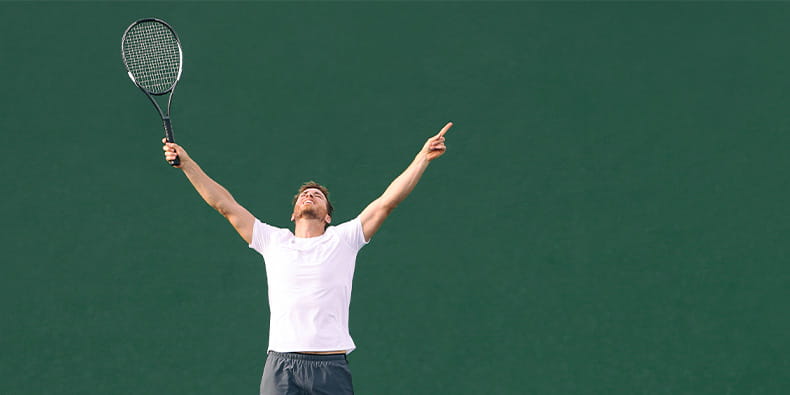
The lexicon of tennis scoring, featuring terms like “love”, “deuce”, and “advantage”, tells a story of competition, strategy, and the pursuit of victory. It’s a story that spans centuries, continents, and countless matches, leaving a mark on the world of sports.
As we reflect on all this, we gain a deeper appreciation for the nuances and history that make tennis not just a game but an exciting and timeless sport. Your knowledge about the history of the scoring system in tennis is likely to be much richer by now.
FAQ
This blog post about the tennis scoring history is about to finish. Nonetheless, before this happens, we have included a few frequently asked questions that will help you solve any pending doubts you may have. Keep in mind that the answers will jump to the paragraph of your interest. See them below:
- SEO Powered Content & PR Distribution. Get Amplified Today.
- PlatoData.Network Vertical Generative Ai. Empower Yourself. Access Here.
- PlatoAiStream. Web3 Intelligence. Knowledge Amplified. Access Here.
- PlatoESG. Carbon, CleanTech, Energy, Environment, Solar, Waste Management. Access Here.
- PlatoHealth. Biotech and Clinical Trials Intelligence. Access Here.
- Source: https://www.bestcasinosites.net/blog/tennis-scoring-history.php
- 1
- 10
- 12th
- 15
- 16th
- 18th
- 23
- 27
- 30
- 36
- 40
- 60
- 77
- 8
- 9
- 97
- a
- About
- according
- achieving
- across
- act
- adding
- adds
- ADvantage
- after
- aimed
- All
- also
- among
- an
- and
- answers
- any
- appreciation
- ARE
- areas
- as
- aspects
- At
- away
- back
- background
- balance
- ball
- based
- BE
- become
- becomes
- been
- before
- beginning
- behind
- below
- BEST
- bets
- Betting
- betting sites
- between
- Blog
- Blue
- born
- both
- brink
- brought
- but
- by
- called
- camaraderie
- CAN
- captivating
- carry
- Center
- Centre
- centuries
- century
- certain
- challenge
- character
- chase
- claim
- clean
- clear
- comes
- compared
- compelling
- competed
- competing
- competition
- Competitive
- concept
- conclude
- consecutive
- considered
- contemporary
- contest
- continue
- Conventions
- could
- Court
- Courts
- covered
- crucial
- De
- dedicated
- deep
- deeper
- define
- depth
- designated
- details
- DID
- differ
- differences
- different
- directly
- distinctive
- does
- Drama
- due
- During
- Dutch
- each
- eager
- earliest
- Early
- element
- embark
- emerged
- emerges
- Emotional
- emphasis
- employed
- equivalent
- era
- etc
- events
- eventually
- Every
- evident
- evolved
- excitement
- Exciting
- exploration
- explore
- extend
- fact
- familiar
- FAQ
- far
- fascinating
- favourable
- Features
- featuring
- Feet
- female
- few
- Final
- find
- finding
- finish
- First
- fluid
- Focus
- follows
- For
- form
- format
- forms
- fortunes
- found
- France
- French
- frequently
- from
- furthermore
- gain
- gained
- game
- Games
- Gaming
- had
- hand
- hands
- happens
- happy
- has
- Have
- heart
- help
- here
- High
- Historical
- history
- hitting
- hold
- How
- however
- HTTPS
- Humble
- if
- illustrating
- immense
- in
- Included
- influence
- information
- initially
- innovations
- instance
- Integral
- interest
- interested
- interesting
- into
- intricacies
- introduced
- Introduces
- introduction
- invention
- involved
- Is
- IT
- ITS
- itself
- journey
- jpg
- jump
- just
- keep
- know
- knowledge
- known
- late
- later
- layers
- layout
- leaving
- less
- like
- likely
- Line
- List
- Look
- love
- make
- manner
- many
- map
- mark
- Match
- matches
- May
- meaning
- means
- measures
- Medieval
- Men
- mere
- Method
- might
- mind
- Modern
- more
- most
- much
- must
- need
- needed
- needs
- net
- Next
- not
- notably
- Notion
- now
- nuances
- number
- numbers
- obvious.
- of
- offering
- often
- Old
- older
- on
- One
- only
- Opportunity
- or
- Origin
- originally
- originating
- origins
- Other
- our
- over
- Paddles
- part
- pending
- physical
- place
- Platforms
- plato
- plato data intelligence
- platodata
- platogaming
- played
- player
- players
- Playing
- Plenty
- Plus
- Point
- Points
- Popular
- popularity
- position
- positioned
- post
- potential
- precise
- predecessor
- predetermined
- Progress
- progression
- pursuit
- rapidly
- rather
- reach
- reaches
- reaching
- reflect
- Regarding
- regards
- RELATED
- relevant
- required
- requires
- rich
- rooted
- roots
- round
- Said
- same
- score
- secure
- Secures
- securing
- see
- sense
- server
- Service
- set
- several
- Shade
- shape
- Shares
- shift
- showcasing
- shown
- side
- signifies
- similar
- similarities
- simpler
- since
- Sites
- situated
- skill
- slightly different
- So
- so Far
- SOLVE
- some
- somehow
- somewhat
- spans
- specific
- spirit
- Sport
- Sports
- standard
- standards
- started
- Starting
- State
- Story
- Strategy
- structure
- structured
- subsequently
- suggests
- system
- table
- taken
- tales
- tapestry
- tells
- tennis
- term
- terminology
- terms
- testament
- than
- that
- The
- The Game
- the world
- their
- Them
- then
- theory
- there
- These
- they
- this
- thought
- thrilling
- Through
- Thus
- tied
- time
- timeless
- to
- Today
- took
- Tracing
- transcends
- transformed
- trip
- triumph
- turn
- two
- typically
- Uncertain
- uncovered
- Understand
- understanding
- undoubtedly
- unique
- unveiled
- up
- us
- use
- used
- using
- utilises
- variable
- victories
- victory
- Wall
- was
- way
- we
- well
- were
- What
- when
- where
- whether
- while
- WHO
- wide
- will
- Wimbledon
- win
- winner
- winning
- Wins
- with
- without
- won
- Work
- world
- worldwide
- would
- years
- yet
- you
- your
- zephyrnet
- zero




